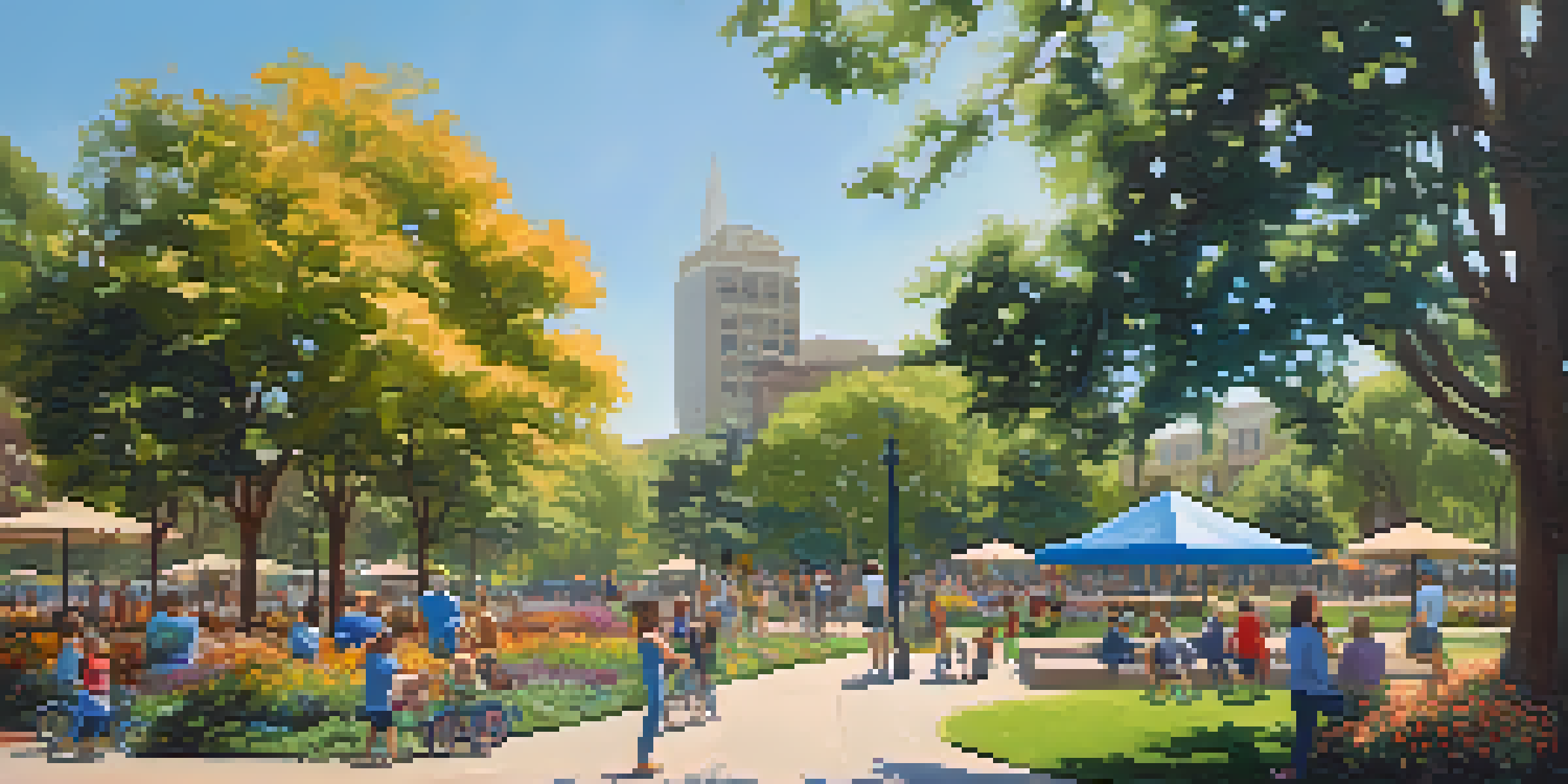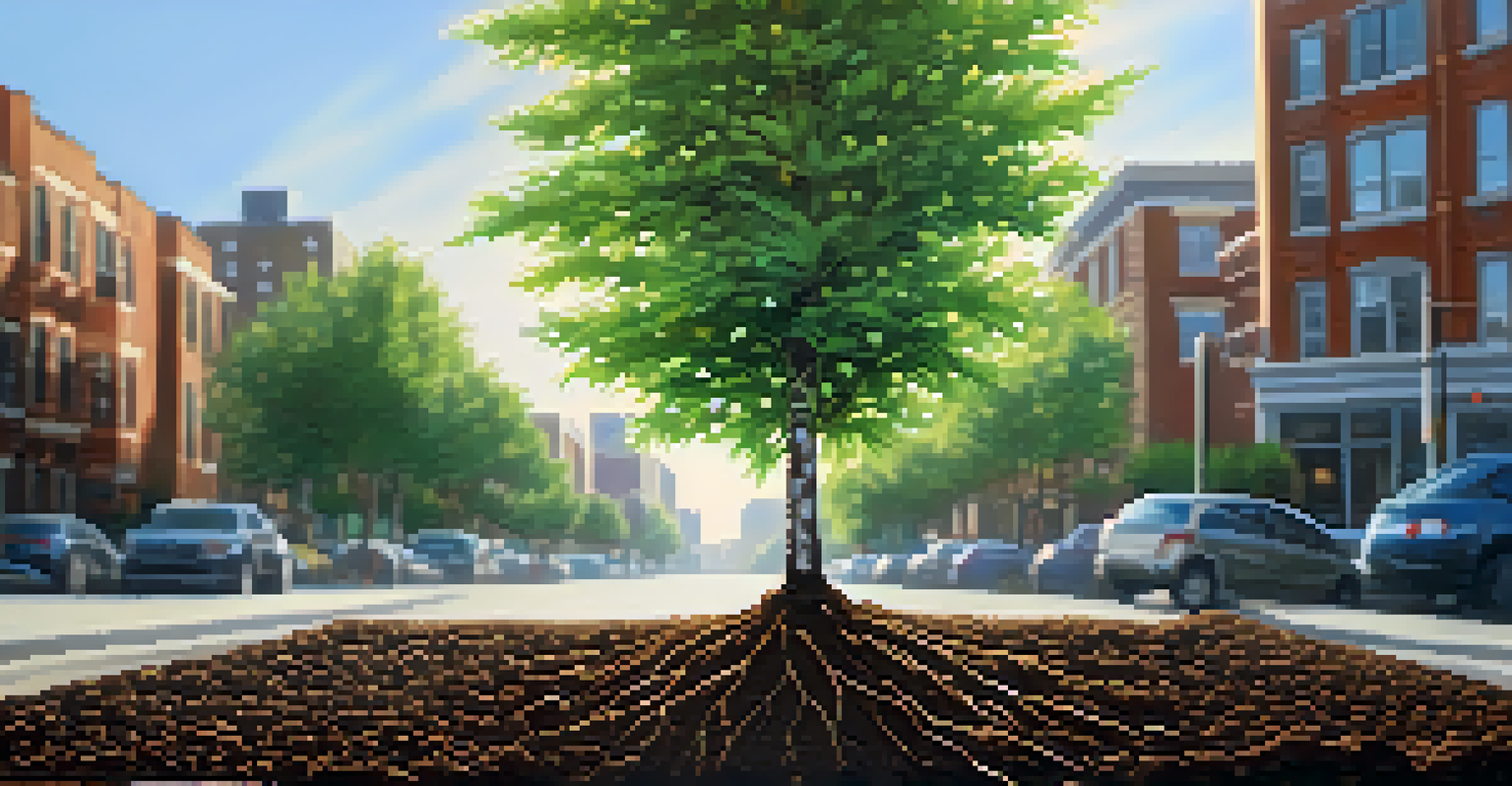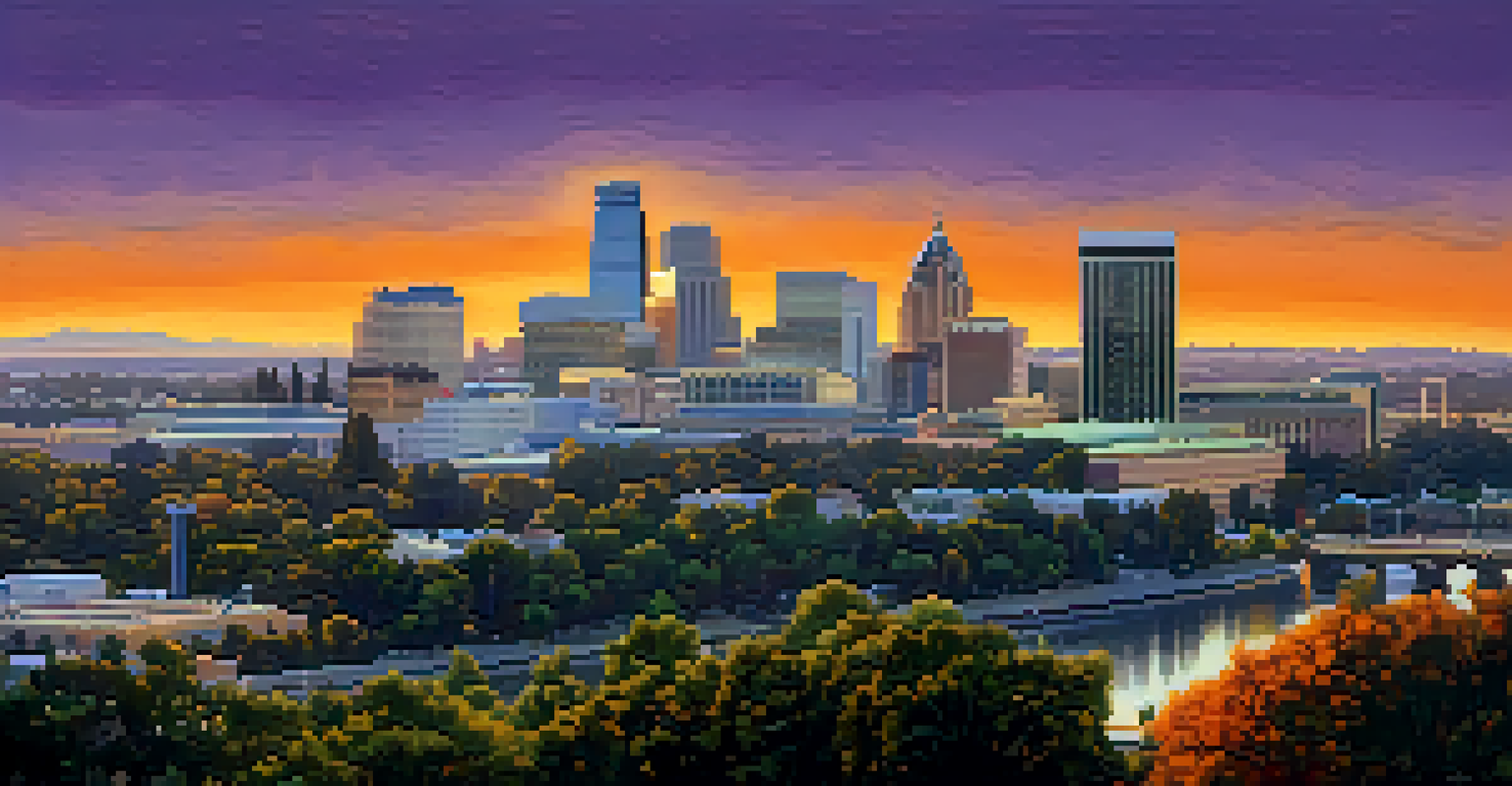Urban Forestry Programs in Sacramento: Greening the City

Understanding Urban Forestry and Its Benefits
Urban forestry refers to the management of trees in urban settings, which plays a vital role in enhancing the quality of life. By integrating trees into the urban landscape, cities can combat pollution, improve air quality, and provide shade. This initiative not only beautifies neighborhoods but also contributes to biodiversity and wildlife habitats. In Sacramento, urban forestry serves as a cornerstone for sustainable development and community well-being.
The best time to plant a tree was twenty years ago. The second best time is now.
Trees can significantly lower temperatures during the hot summer months, creating a more comfortable environment for residents. Additionally, they help in reducing stormwater runoff, which can prevent flooding and protect water quality. This means that urban forestry programs are not just about planting trees; they are about creating a healthier urban ecosystem. As Sacramento continues to grow, these benefits become increasingly important.
Moreover, urban forestry fosters a sense of community and connection among residents. Neighborhoods with ample green spaces often see increased social interaction and community pride. By engaging citizens in tree planting and care, Sacramento’s programs not only enhance the environment but also strengthen community ties, making the city a more vibrant place to live.
Sacramento's Urban Forestry Goals and Initiatives
Sacramento's urban forestry program aims to increase the city’s tree canopy cover to improve environmental and social outcomes. The goal is to reach a canopy cover of 30% by 2030, which is a significant increase from current levels. Achieving this goal requires strategic planning, community involvement, and ongoing maintenance. The city has set forth several initiatives to mobilize resources and engage residents in this mission.

One key initiative is the Tree Canopy Assessment, which analyzes existing tree cover and identifies areas where trees can be planted. This data-driven approach allows Sacramento to prioritize planting efforts in neighborhoods that lack adequate green space. The city also offers incentives for homeowners and businesses to plant and maintain trees, further enhancing community participation. By providing resources and education, Sacramento empowers residents to take part in the greening of their city.
Urban Forestry Enhances Quality of Life
Integrating trees into urban areas improves air quality, combats pollution, and fosters community connections.
Additionally, Sacramento collaborates with local organizations and volunteers to host community tree planting events. These events not only help increase tree numbers but also educate participants on the importance of urban forestry. By fostering a collaborative spirit, Sacramento is building a community that values and actively participates in its urban forestry efforts, leading to a more sustainable and green city.
Community Involvement in Urban Forestry
Community involvement is crucial for the success of urban forestry programs in Sacramento. The city encourages residents to take part in tree planting and maintenance, which helps foster a sense of ownership and responsibility. This hands-on approach not only beautifies neighborhoods but also educates participants about the benefits of trees. Engaging the community ensures that urban forestry is not just a city initiative but a collective effort.
Trees are the earth's endless effort to speak to the listening heaven.
Sacramento's outreach programs, such as workshops and informational sessions, equip community members with the knowledge needed to care for their trees. Residents learn about proper planting techniques, tree maintenance, and the environmental benefits of a healthy urban canopy. This education helps participants feel more connected to their local environment and empowers them to make informed decisions about urban greenery.
Moreover, schools and youth organizations are actively involved in urban forestry efforts. By integrating tree planting activities into educational programs, Sacramento is instilling a sense of environmental stewardship in the younger generation. These initiatives cultivate a love for nature and encourage lifelong engagement in urban forestry, ensuring a greener future for Sacramento.
Challenges Facing Urban Forestry in Sacramento
Despite the positive strides in urban forestry, Sacramento faces several challenges that can hinder progress. One major issue is the limited funding available for tree planting and maintenance programs. As the city allocates resources to various projects, urban forestry may not always be a top priority, which can slow down initiatives. Securing consistent funding is essential for sustaining tree care efforts and expanding the urban canopy.
Another challenge is the impact of climate change on tree health and survival. Extreme weather conditions, such as prolonged droughts or heavy storms, can adversely affect urban trees. Sacramento must adapt its forestry practices to ensure that trees are resilient to these changing conditions. This includes selecting species that are better suited to withstand local climate variations and implementing efficient irrigation strategies during dry spells.
Sacramento's Tree Canopy Goals
The city aims to achieve a 30% tree canopy cover by 2030 through community involvement and strategic initiatives.
Additionally, urban development poses a threat to existing trees in Sacramento. As the city grows, the demand for land often leads to tree removal, which can diminish the urban canopy. Balancing development with the preservation and planting of trees is crucial. Implementing policies that protect existing trees and mandate planting new ones during development projects can help mitigate this issue.
The Economic Value of Urban Forestry
Urban forestry is not just an environmental concern; it also carries significant economic benefits for Sacramento. Trees contribute to increased property values, as homes surrounded by greenery are often more desirable. Studies have shown that neighborhoods with a higher tree canopy can see property values rise by 10% or more. This increase can lead to greater tax revenue for the city, which can be reinvested in community services.
Moreover, urban trees can reduce energy costs for residents. By providing shade in the summer, trees can lower air conditioning bills, while their windbreak effect in the winter can reduce heating costs. This not only saves money for homeowners but also lessens the overall energy demand in the city. In a time when sustainability is key, investing in urban forestry is a smart economic decision.
Additionally, urban forestry initiatives can create job opportunities in Sacramento. From planting and maintaining trees to educating the community, these programs require a workforce that supports local employment. By fostering jobs in green industries, Sacramento can build a more resilient economy while addressing environmental concerns. The economic value of urban forestry is clear: it’s an investment in both the community and the environment.
The Role of Technology in Urban Forestry
Technology has become an essential tool in the advancement of urban forestry in Sacramento. From mapping tree locations to monitoring their health, technology provides valuable data that can enhance forestry efforts. Geographic Information Systems (GIS) are used to create detailed maps of tree canopies, helping city planners identify areas in need of more greenery. This data-driven approach allows for more effective decision-making.
Additionally, mobile apps and online platforms have made it easier for residents to report tree issues or request new plantings. These tools foster communication between the community and city officials, ensuring that urban forestry needs are addressed promptly. By leveraging technology, Sacramento is creating a more responsive and engaged urban forestry program that meets the needs of its residents.
Economic Benefits of Urban Trees
Urban forestry increases property values, reduces energy costs, and creates job opportunities within the community.
Furthermore, advancements in remote sensing technology allow for real-time monitoring of tree health and growth. This enables city officials to respond proactively to threats like pests or diseases. By utilizing technology to understand and manage urban forests better, Sacramento is setting a precedent for how cities can innovate in their approach to greenery and sustainability.
Future of Urban Forestry in Sacramento
The future of urban forestry in Sacramento looks promising as the city continues to prioritize green initiatives. With ambitious goals for increasing tree canopy cover, Sacramento is committed to creating a more sustainable urban environment. This vision involves not just planting trees but also ensuring their long-term health and integration into the urban landscape. Community involvement will remain a cornerstone of these efforts, as residents play a crucial role in shaping the city’s green future.
As climate change continues to pose challenges, Sacramento is also focusing on resilience in its urban forestry practices. By selecting tree species that can thrive in changing conditions, the city is preparing for a future where urban ecosystems can adapt and flourish. This proactive approach will ensure that Sacramento's green spaces remain vibrant and beneficial for generations to come.

Ultimately, the success of urban forestry in Sacramento will depend on collaboration among city officials, community members, and local organizations. By working together, they can create a greener, healthier city that enhances the quality of life for all residents. The commitment to urban forestry reflects Sacramento’s dedication to sustainability, making it a model for other cities looking to invest in their green infrastructure.